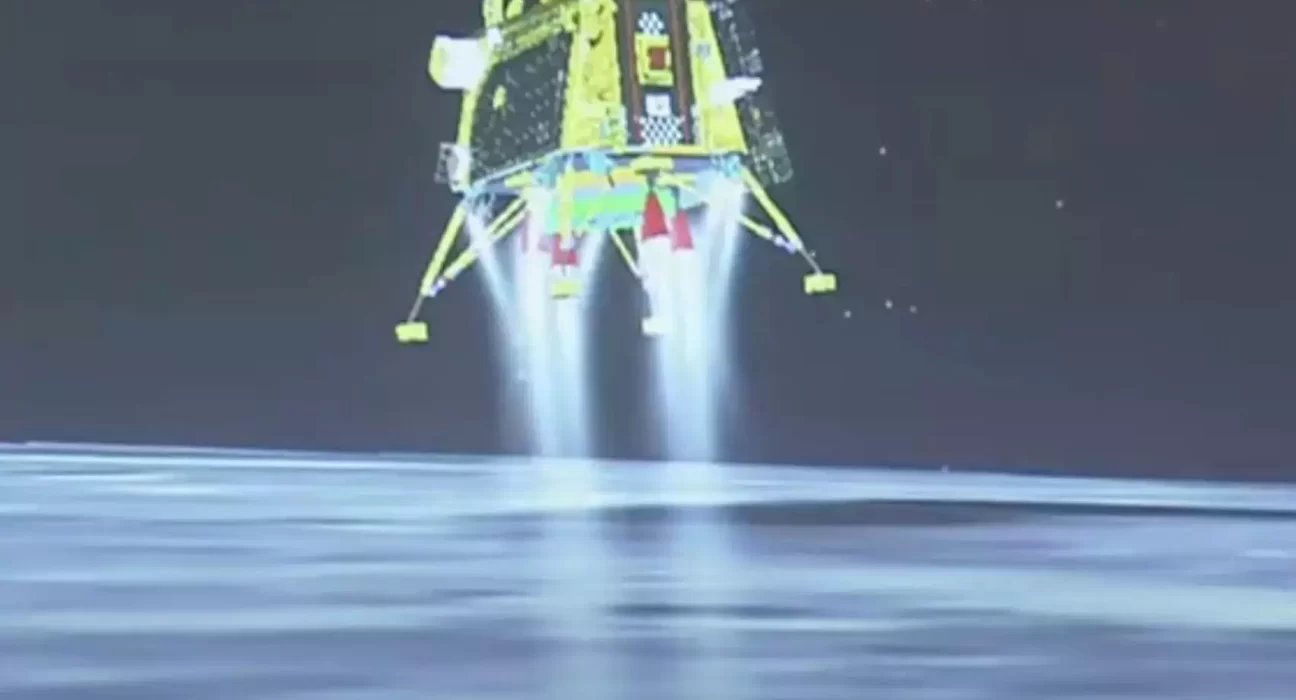At a fraction of the cost of NASA and Russia missions, India landed on the moon and flew to Mars. NASA/Goddard Space Flight Center/Arizona State University managed to get India to the moon on a budget.
The Indian moon landing on Wednesday made history without breaking the bank. NASA’s planned rover and Russia’s moon mission cost far more than Chandrayaan-3. It was both historic and budget-friendly for India to land on the lunar south pole on Wednesday.
Indian’s moon mission cost $74 million, less than half the cost of Russia’s south-pole lander ($200 million), which crashed on Sunday, or NASA’s planned VIPER rover to the lunar south pole ($433.5 million).
Chandrayaan-3, the first spacecraft to land on the south pole of the moon, is also cheaper than the Hollywood blockbusters “Gravity” ($100 million), “The Martian” ($108 million), and “Interstellar” ($165 million).
In a post on X, the platform formerly known as Twitter, SpaceX CEO Elon Musk praised the mission’s low cost.
According to the New York Times, S. Somanath, the director of the Indian Space Research Organization (ISRO), told reporters with a laugh: “I won’t disclose such secrets because we don’t want everyone to be so cost-effective.”
As opposed to NASA, which is required to publish detailed budget proposals, India hasn’t shared much information about its budgeting.
The comparison isn’t apples to apples since that’s also a conversion from Indian currency, rupees.
The small price tag can be partly explained by the mission’s small size and scope, as well as the fact that it was a rework of an earlier flight.
Spacecraft with small costs than NASA
On the moon, India kept its spacecraft small to be frugal.
Chandrayaan-3 weighed just 1,752 kilograms, making its launch relatively inexpensive.
According to Robert Braun, head of the Space Exploration Center at Johns Hopkins Applied Physics Laboratory, “small landers mean small launch vehicles, smaller components, and less materials.”
ISRO learned that lesson in 2014, when they became the first country to successfully insert a spacecraft into Mars orbit.
According to Wired, ISRO kept the receipt for the Mars mission to $74 million by keeping the payload light, adapting technologies previously used, and keeping workers’ salaries low.
NASA’s Mars orbiter, MAVEN, operated differently.
Andrew Coates, a professor who has worked on European and NASA Mars missions, told BBC News in 2014. “The payload only weighs about 15 kg. Compare that with the complexity of MAVEN.”
NASA’s MAVEN mission cost $582.5 million, according to the Planetary Society, as proof of concept.
By the time Chandrayaan-3 reached lunar orbit, it weighed about 1,237 kg, according to Anatoly Zak, an English-language reporter covering Russia’s space programs.
India’s other strategy may help it beat Russia’s price.
India to the moon and beyond, start small and build step by step
The mission is not India’s first attempt to land on the moon’s south pole. Chandrayaan-2 crashed there in 2019.
Chandrayaan-3’s cost may not include the costs of research, development, and testing involved in the first attempt.
As a cost-management technique, they have approached their lunar program as a series of missions.” Braun said.
The Indian moon program began with Chandrayaan-1, which dropped a hard-impact probe on the moon.
A soft landing and a small rover are much easier and cheaper missions to start building new capabilities.
Braun said NASA has taken a similar approach to Mars, and it has “worked very well.”.
That was in contrast to Russia’s Luna-25 mission, the country’s first mission to the moon since the 1970s and the fall of the Soviet Union. The mission aimed to make a soft landing on the south pole of the moon, which no one had ever achieved.
They went for a hard mission right out of the gate,” Braun said, adding that an incremental approach is actually a good way to explore space.
Also Read:
